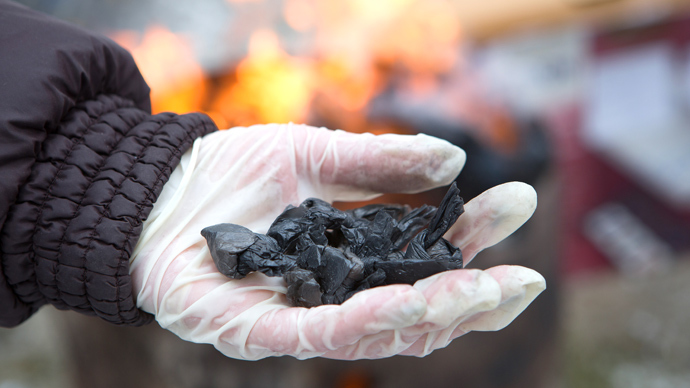Krokodil emerged secretively in the United States without much notice. When addicts started showing up at emergency rooms and treatment centers with the devastating effects caused from addition to the cheap heroin substitute, officials and treatment providers knew very little.
Krokodil ingredients include codeine and other common ingredients found at many hardware and big box stores. Lighter fluid, paint thinner, oil, alcohol and even gasoline or industrial strength cleaners mixed with the opiate painkiller and then injected immediately gives users the quick, cheap high. Another reason krokodil experienced such quick and widespread use is that the drug is easily “cooked” in the average kitchen by crushing the codeine tablets and then mixing it with the other ingredients.
Krokodil gets its name from the crocodile because of one of its most serious side effects: Users develop very scaly patches of skin and suffer from tissue death. Live Science says that necrosis or decay and death of tissue can set in quickly after krokodil use. Krokodil quickly became known as a “flesh-eating” or “zombie” drug because of its effects on users.
One of the reasons for the devastating physical effects of krokodil is that the drug is not purified, leading to potential risk of abscesses, injury to veins and death of tissue. Live Science says that even after treatment, krokodil addicts “often walk away severely disfigured: severe scarring, bone damage, amputated limbs, speech impediments, poor motor skills” as well as varying degrees of brain damage.
Some sources apparently did not realize the prevalence of krokodil after it reached the U.S. In 2012, the New York State Office of Alcoholism and Substance Abuse Services stated, “The DEA reports that they are looking at the drug overseas but have not as yet seen it in the US.”
By 2013, several sources, including the National Institute on Drug Abuse (NIDA) and National Institutes of Health (NIH) and multiple media sources reported on the dangers and effects of using krokodil. CBS News told of details from the Chicago Tribune reporting in 2013 that authorities suspected that six people in Chicago used krokodil. Arizona reported two cases of krokodil addiction in 2013, among the first reported cases in the country, according to an Arizona poison control center.
That suspicion was confirmed in a statement that Live Science quoted from Fox News regarding the Arizona cases of krokodil addiction. “As far as I know, these are the first cases in the United States,” said Frank LoVecchio, director at Banner Good Samaritan Poison and Drug Information Center.
The United States is late to the knowledge and epidemic of krokodil. It is thought to have originated in Russia, then spread to other European countries, where more than an estimated one million people suffer from krokodil addiction.
Now that krokodil is in the United States, the substance abuse treatment community must address krokodil addiction. The National Institutes of Health says, “A comprehensive response to the emergence of krokodil and associated harms should focus both on the substance itself and its rudimentary production methods, as well as on its micro and macro risk environments.” Treatment providers must educate and train staff to recognize krokodil addiction and create a comprehensive and individualized treatment program, ensuring that each individual receives a full medical evaluation to address all substance abuse and mental health issues during recovery.
